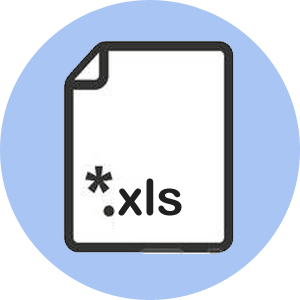ProGP396 (Putative periplasmic protein)
Home -> ProGPdb -> Search ProGP -> Display data
| ProGP ID | ProGP396 (Putative periplasmic protein) |
| Validation Status | Characterized |
| Organism Information | |
| Organism Name | Campylobacter jejuni HB93-13 |
| Domain | Bacteria |
| Classification | Phylum : Proteobacteria Class : Epsilonproteobacteria Orders : Campylobacterales Family : Campylobacteraceae Genus : Campylobacter Species : jejuni Subspecies : jejuni Strain : HB93-13 |
| Taxonomic ID (NCBI) | 192222 |
| Genome Information | |
| GenBank | NC_002163.1 |
| EMBL | AL111168 |
| Organism Additional Information | Campylobacter jejuni is a microaerophilic, Gram-negative, human pathogen that is the major cause of bacterial food-borne diarrhoea (gastroenteritis). It is most frequently responsible for a form of post-infection neuromuscular paralysis known as Guillain Barre' syndrome. It also leads to an immunoproliferative small intestine disease that is a rare malignant lymphoma of the intestine. Motility is essential for pathogenicity. |
| Gene Information | |
| Gene Name | cj1621 |
| NCBI Gene ID | 905888 |
| GenBank Gene Sequence | NC_002163.1. |
| Protein Information | |
| Protein Name | Putative periplasmic protein |
| UniProtKB/SwissProt ID | Q0P807 |
| NCBI RefSeq | WP_002851224.1 |
| EMBL-CDS | CAL35718.1 |
| UniProtKB Sequence | >tr|Q0P807|Q0P807_CAMJE Putative periplasmic protein OS=Campylobacter jejuni subsp. jejuni serotype O:2 (strain ATCC 700819 / NCTC 11168) GN=Cj1621 PE=4 SV=1 MLAFFKGLGVGFLCLLLFVAGVVFNVEFLGKKDSNHDLYFSRNIEVSNTLKPDILYANIN FWANENLSSKITLDNSEKAEITNTFNQILERSKKENFCSGGSFSLEPNFSYKDGIQTPKG QRFDANLECEFKENQLADFNKLLNDINSIIAKNNFISVSTPAIQTKFSKDTLNNNKENLY KELLKTSYEYEKTYSLDLNKTCVLKNLQVNANTNIAPRMLNAKSDNIELSSPIISKKEQI LNAKALFICK |
| Sequence length | 250 AA |
| Glycosylation Status | |
| Glycosylation Type | N- (Asn) linked |
| Experimentally Validated Glycosite(s) in Full Length Protein | N199 |
| Glycosite(s) Annotated Protein Sequence | >tr|Q0P807|Q0P807_CAMJE Putative periplasmic protein OS=Campylobacter jejuni subsp. jejuni serotype O:2 (strain ATCC 700819 / NCTC 11168) GN=Cj1621 PE=4 SV=1 MLAFFKGLGVGFLCLLLFVAGVVFNVEFLGKKDSNHDLYFSRNIEVSNTLKPDILYANIN FWANENLSSKITLDNSEKAEITNTFNQILERSKKENFCSGGSFSLEPNFSYKDGIQTPKG QRFDANLECEFKEN*(199)QLADFNKLLNDINSIIAKNNFISVSTPAIQTKFSKDTLNNNKENLY KELLKTSYEYEKTYSLDLNKTCVLKNLQVNANTNIAPRMLNAKSDNIELSSPIISKKEQI LNAKALFICK |
| Sequence Around Glycosites (21 AA) | EYEKTYSLDLNKTCVLKNLQV |
| Technique(s) used for Glycosylation Detection | ZIC-HILIC enrichment |
| Technique(s) used for Glycosylated Residue(s) Detection | Reversed Phase LC-Tandem CID/HCD-MS |
| Glycan Information | |
| Glycan Annotation | Heptasaccharide GalNAc- α1,4-GalNAc- α1,4-(Glcβ1,3)-GalNAc- α1,4-GalNAc- α1,4-GalNAc- α1,3-Bac-β1 where Bac is bacillosamine (2,4-diacetamido-2,4,6-trideoxyglucopyranose) |
| BCSDB ID | 20059 |
| GlyTouCan | G38348FF |
| Technique(s) used for Glycan Identification | Reversed Phase LC-Tandem CID/HCD-MS |
| Literature | |
| Year of Identification | 2011 |
| Year of Identification Month Wise | 2011.2.10 |
| Year of Validation | 2011 |
| Reference | Scott, N.E., Parker, B.L., Connolly, A.M., Paulech, J., Edwards, A.V., Crossett, B., Falconer, L., Kolarich, D., Djordjevic, S.P., Højrup, P. and Packer, N.H., 2011. Simultaneous glycan-peptide characterization using hydrophilic interaction chromatography and parallel fragmentation by CID, higher energy collisional dissociation, and electron transfer dissociation MS applied to the N-linked glycoproteome of Campylobacter jejuni. Molecular & cellular proteomics, 10(2), pp.S1-S18. |
| Corresponding Author | Stuart J Cordwell |
| Contact | School of Molecular and Microbial Biosciences, University of Sydney, Sydney, Australia |

